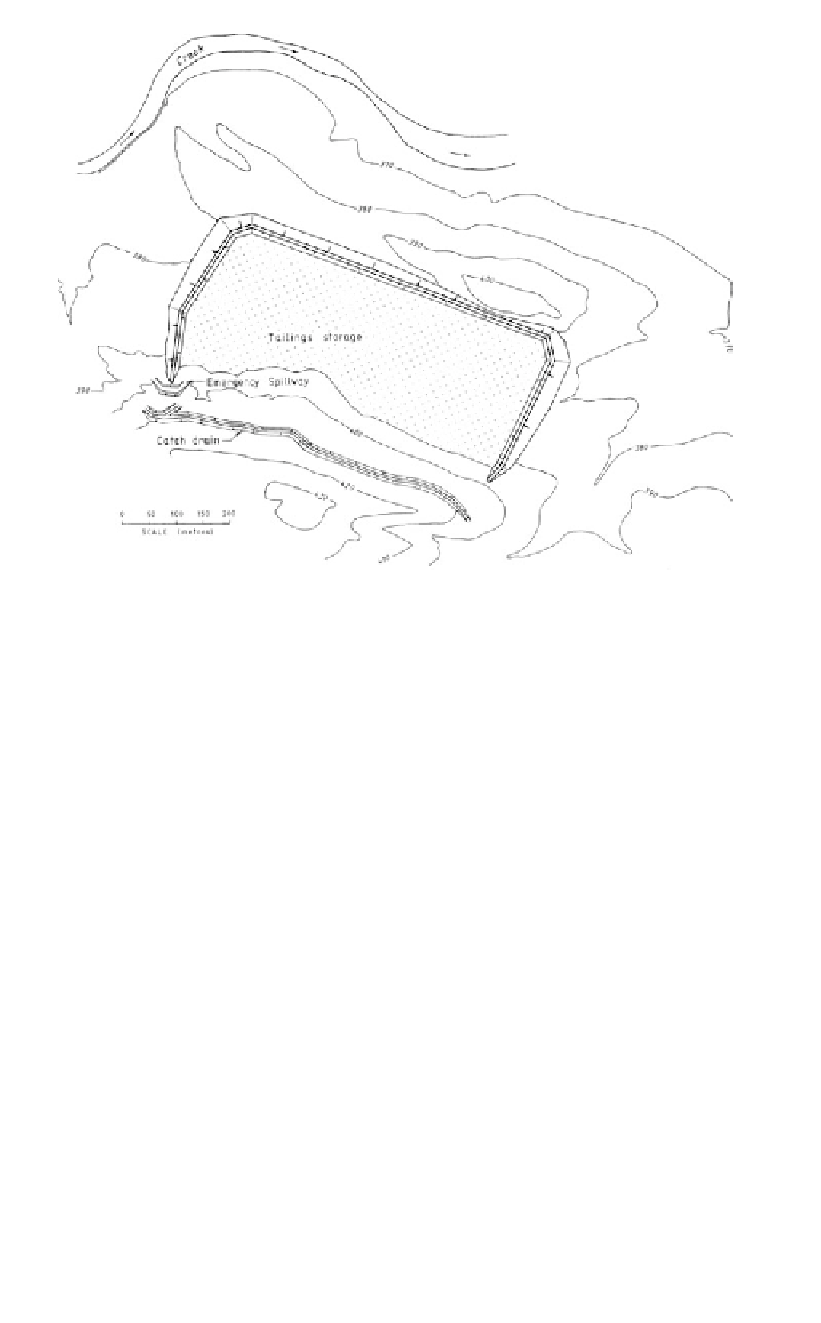Environmental Engineering Reference
In-Depth Information
Figure 19.33.
Sidehill impoundment as proposed for Ben Lomond tailings dam (Coffey and Partners, 1982).
Side hill
- suitable only where hill slopes are relatively flat - say
10%. Otherwise embankment
fill volumes become excessive.
In many cases it is desirable to limit the flow into the storage from external catchments
using catch drains such as those shown in Figure 19.33.
19.5.7
Other disposal methods
There are other less commonly used methods of tailings disposal. These include:
19.5.7.1
Thickened discharge or Robinsky method
In this method tailings are thickened to a higher solids content than would normally be
used, i.e. around 60% solids content compared to 30% to 40% for normal tailings oper-
ation. At this solids content the tailings can be deposited in a cone shaped deposit as
shown in
Figure 19.34
.
According to Robinsky (1979), the final cone slope is ideally around 6° to limit erosion.
The concept is that the greater slope allows storage of larger quantities of tailings. It is
claimed that this results in overall reduction in costs, as the saving in embankment costs
more than offsets the costs of thickening.
Ritcey (1989) gives details of two mines where the method has been used. Blight and
Bentel (1983) discuss the use of thickened tailings to increase the slope of tailings on a
conventional dam to increase the storage capacity. They also give a method for estimating
the stable slope of the tailings based on the yield point stress of the slurry.
It is a relatively uncommon method, partly because it requires a very large area, and it is
difficult to control exactly where the tailings deposit and the toe of the area is for run-off

